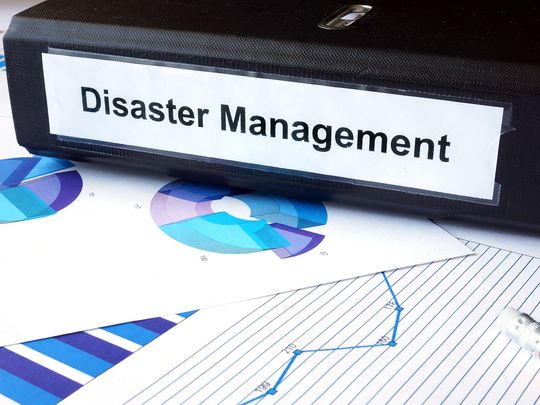
Disaster recovery is a multi-faceted challenge. In the wake of the massive floods of April in Dubai, Sharjah, and across the northern emirates, local and national leaders are taking a closer look at the long-term impact. They face a daunting path.
Effective response is crucial in the initial stages, but it's merely the beginning. The true measure of an emergency manager's success lies in the ability to oversee the entire recovery process. Many in our field focus only on the immediate aftermath. However, this overlooks the more challenging half of recovery.
Recovery requires specific tools and skills often neglected in traditional emergency management training. A comprehensive disaster recovery includes program management, construction management and integrated procurement and contracting. Without these, recovery will be slower, and financial and reputational risks higher. These tools, often provided by the private sector, are crucial for a swift and efficient recovery process.
Stepping into recovery phase
The lifecycle of a disaster begins with the actual disaster: implementing emergency protective measures and doing everything possible to save lives and minimize property damage while the threat is active. Once the threat to human life has subsided, we enter the recovery stage.
After funding is clear, next comes determining priority projects, outreach to communities, overcoming local permitting and environmental issues, blending in mitigation measures (and funding), building repeatable procurement processes, interviewing contractors, design, constructability, contract negotiation, and finally, construction. This is where many think the lifecycle ends.
It doesn’t stop with construction. You must ensure that your original plan includes commissioning, maintenance and sustainability. It is a long road before you reach the celebratory days of ribbon cuttings.
Scale up project management
Program management is vital for the success of disaster recovery. Defined by the Project Management Institute (PMI) as the centralized coordination of related projects to achieve strategic objectives, program management ensures efficient resource utilization and alignment with organizational goals.
In the context of disaster recovery, a skilled program manager oversees various projects, ensuring streamlined communication, effective resource allocation and timely project execution.
Construction management is another critical element too. This expertise minimizes delays, manages resources effectively, and delivers resilient structures that can withstand future uncertainties.
Project controls, encompassing systematic processes for planning, monitoring, and managing project elements such as scope, schedule, cost, and risk, are integral to both program and construction management.
Effective project controls provide visibility into project progress, identify potential issues, and enable informed decision-making, ensuring project objectives are achieved within defined constraints.
Integrated procurement and contracting processes are also essential. Expertise in these areas ensures efficient resource allocation, cost management, risk mitigation, regulatory compliance, timely project completion, and quality assurance. Comprehensive procurement and contracting processes maintain transparency and accountability throughout the recovery process.
The true challenge of recovery lies in recognizing and preparing for the entire disaster lifecycle. Success requires foresight and the right tools to navigate the path ahead. By embracing program management, construction management, project controls, and integrated procurement and contracting, we can achieve a full recovery.
The private sector's involvement is not just beneficial, but essential in this endeavor.
When communities affected by a disaster are restored to a state of resilience, well-being, and sustainable development, then—and only then—is recovery finished and the disaster lifecycle complete.
The growing impacts of climate change mean more intense, more frequent, more devastating, and more costly disasters. We must do everything we can to ensure successful recoveries. Accomplishing this monumental task—truly slaying the disaster recovery beast—requires embracing program and construction management, procurement, and contracting before the disaster happens.














